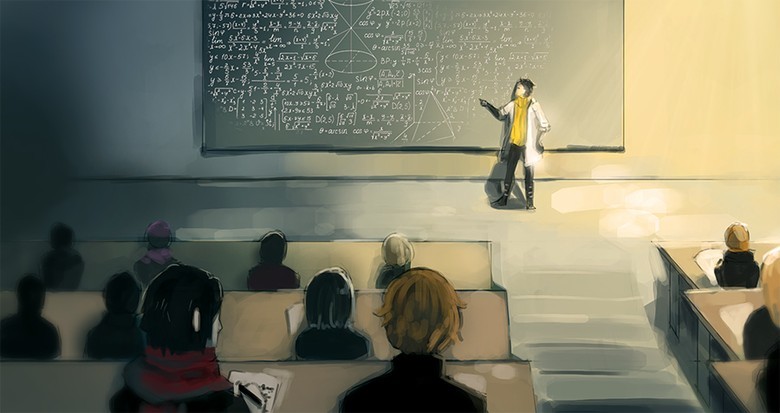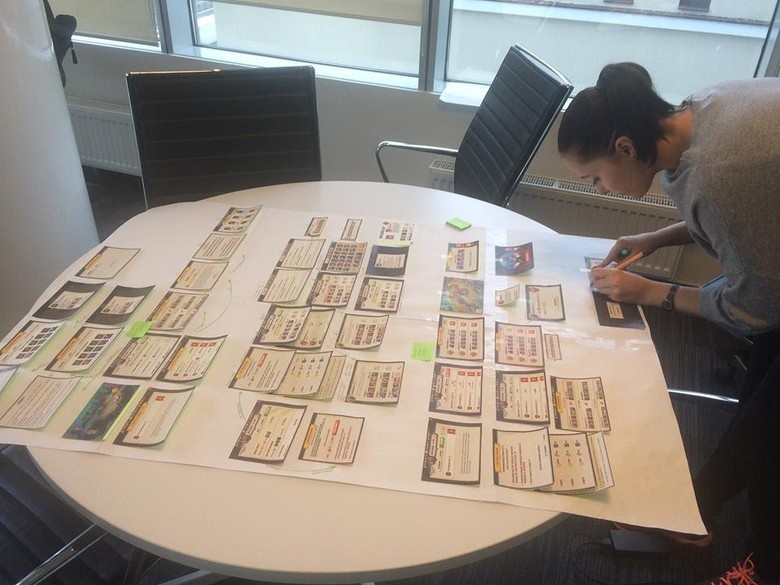Eight Tips for Beginning Usability

College by DamaiMikaz
Hi, Habr! My name is Olga Schubert, I do UX-design of game projects Mail.ru Group. Recently, I have increasingly noticed a keen interest in the usability of games from both major developers and start-ups. Where to find specialists? How and where to learn the basics? Can yesterday's game designer become a UX designer? Gathering into the heap the most common questions of beginning usabilityists, I formed a short list of tips that will help overcome a difficult career path.
1. Investigate references, and not only them.
In those days, when the mobile gaming market began to grow rapidly, one of the leaders of our studio gathered a team that began analyzing popular projects. Once a week, a top product or a product with an interesting history was selected, which was proposed to be as much as possible gutted, finding answers to urgent questions. Here is product A — try to identify the key criteria for its success. Here is product B - the profit chart after a specific update has collapsed. Why? But project C - in the absence of stable traffic, profits instantly fall. What solutions do you see for him? After such coaching, I had a habit of studying other people's products. Subsequently, I was convinced that without it you as a developer are simply irrelevant.
It so happened that I teach at several universities, and therefore I constantly deal with "zero" students who have no design experience at all. Trying to solve their problems, they reinvent the wheel, spending a great deal of time on what has already been done before them. Sometimes the decisions are not so bad, but too unusual: if the user is not familiar with them, it is a risk that he will not understand and appreciate this impulse.
')
There is an opposite situation, when one or several top products develop some innovative idea, and all other developers start repeating it - this is how a user pattern is born. However, if you are not in the subject line and continue to ignore innovations, then at least you will be left without a good tool, but at most - the users' loyalty to you will be a little bit, but it will fall. Therefore, make it a rule: you must know everything that is contained in the top 100 grossing, and not just know, but disassemble the bones. And since the market is mobile, and products tend to develop, constantly update their knowledge.
2. Get to the truth
This principle itself underlies the UX, but in practice its application often leaves much to be desired. Lazy developer - a simple performer: he wrote the TK - he performed the TZ. Another thing is that all this may be useless work of the whole team, and not just financially ruinous, but also uninteresting for the user. Game designers understand the task from the point of view of mechanics and monetization, grope for the levers that are planned to be pressed, and transfer their work to the designer, considering the work completed. Often at the same time in the TOR it is proposed to combine that which cannot be combined, or an approximate scenario is drawn, which in fact can and should be facilitated at times.
Before you get started, you must understand the task even better than its author. Ask questions, climb into his soul, if need be. Do not accept any suggestions on the visual: this is your work. You can take note of interesting ideas, but do not have to unconditionally fulfill everything you have been asked for. Your task is to work in conjunction with the author of the feature, so that together we can arrive at the expected result. Of course, all of your achievements, especially those that do not quite correspond to the TK, you must discuss and justify in advance. Ultimately, you are called to make the project better, not worse.
3. Draw
Teach yourself to paint every new task on paper. There are a number of questions that you must answer first. What is this window for? What tasks does it solve? Which of them are primary and which are secondary? What else can be useful for solving these problems? How do similar micro tasks look in other windows of the game? Is it necessary to break everything into steps so that it is convenient to work with it? Where do we come from and where will we go next? And so on and so forth, the list may expand depending on the complexity and originality of what you are doing.
I know for sure: trying to keep all this in mind, you can only vaguely imagine whether you have chosen the right course. So feel free to talk to yourself on paper.
Recently, I was developing a global macrofiche for Juggernaut Wars - clan battles. As usual, I designed it in the simplest graphic editors, but I quickly realized that my script does not fit on one monitor, or two, or three. It became impossible to cover all of this in order to find potential errors, better structure and optimize data. I had to print layouts and deploy the whole small UX War Room. This is done not only by us, but by all the usbists of top international companies. It's just that this cheap method is 100% justified, and no one has yet invented a better solution.

Recently, my colleague for two days struggled with a simple task that did not give her peace of mind. Resting on the wall, switching to something else, then returning to the problem again, but no solution seemed optimal, in all cases there were flaws. Finally, giving up, a colleague armed with pencils and felt-tip pens. And what do you think? The answer was found ten minutes later. It turned out that the solution lay on the surface, just needed to draw it to make a good look.

4. Go back to what has already been done.
If you do not use a product that you develop, then you are a poor designer. Your game is constantly undergoing changes and evolves like a living organism, so all of your achievements may become obsolete or imperfect. In addition, when you immerse yourself in the elaboration of a task, you merge with it and with its inaccuracies, your eyes become blurred, and you stop seeing the truth. Again, sometimes the launch launch dates, inactive front-end and other circumstances force you to force events and agree to potentially vulnerable solutions that you yourself are not completely sure about. All this can mean only one thing: for you there are no past tasks. They are all current. Because the client programmer can break what has already worked. Because game designers come up with a feature that affects almost all already implemented game blocks, and you have no right to forget about one of them. Because you yourself are improving and growing, and your best idea in six months may seem to you a nonsense. Because users think differently than you, and for some reason they “fall off” at the 25th level. Whether you like it or not, you will have to return to what you have done over and over, even if the line product manager is against such an iterative approach to development. Negotiate! Of course, your task is to understand this need, but not to abuse it.
5. Look for like-minded people.
One head it's good, but two better. The human factor has always been and will always be an integral part of creative development, rich in errors and potential risks. No matter how powerful your expertise is, you cannot see the result of your work from the outside. Maintaining objectivity is very difficult, especially when the decision was extracted by hard work: not everyone will have the courage to nullify his creation and start all over again. Not everyone, in general, is able to see and admit his mistakes. So try to surround yourself with like-minded people who understand the subtleties of your work. Exchange of opinions and best practices is invaluable: you will not find this in any thematic textbook.
6. Learn the platforms
Whatever platform you prefer, try to be a versatile developer. I have repeatedly encountered a situation where users of one platform absolutely do not understand the interface solution borrowed from another, because it is alien to them. Consider the features of different devices: they can open up additional possibilities for you, but they can, on the contrary, select them. It is clear that the product you make is one and you have to choose a certain golden mean. But if your own heuristics are limited solely by user experience on a single platform, you can be very mistaken in decisions.

7. Consider your capabilities.
Each TK has its own history: the allocated resources, the timing, the possibilities, the priority. Similar problems that you face in different circumstances should be solved differently. Do not try to pass it on to your linear producer: he can only inform you that the task should have been passed yesterday. But the depth of the problem, its risks and possible solutions truly understand you, and not him. A good professional feels better than others how to make candy out of nothing. Therefore, if you could afford to spend a week on the solution of task A, and there is only two hours and one-armed designer to solve the problem B equal to her, adapt to this reality.
8. Do not be a robot
Interface design is a science that can be embraced by a set of general principles and rules. But designing human emotions is a more subtle and deeper work. The ability to plan ahead when a player’s excitement breaks out, when greed encompasses him, when he experiences an incredible sense of pride and satisfaction - this is what distinguishes a very good usability from a good one. If all your windows in the game are beige and at some point you suddenly get a green one - you should understand perfectly why you are doing this and why such a window in a good sense will break the player’s templates. The main thing - do not be afraid to go beyond. Believe me, sometimes it is necessary to ignore the rule in order to give the user a great motivational impulse.
In conclusion, I want to say that the main task of any UX designer is to find a balance between real user experience and the solutions through which this experience evolves. It is you who are the link between dry mechanics and the final product that will be served on a platter to the player. Follow the general principles, but stop thinking out of pattern: you will find yourself in queens, and the result will not take long.
Source: https://habr.com/ru/post/313164/
All Articles